Research project: Acoustics of turbofan duct systems
Investigating the propagation and radiation of sound from turbofan aircraft engines
Investigating the propagation and radiation of sound from turbofan aircraft engines
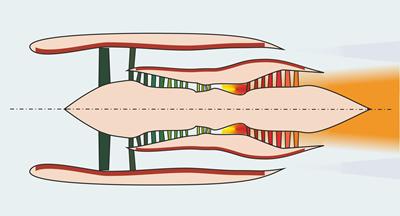
There has been considerable research in duct acoustics over the past forty years, largely owing to the advent of the high-bypass-ratio turbofan jet engine used in civil aviation.There are a number of turbomachinery noise sources in turbofan jet engines, such as fan, compressor, combustion and turbine noise. These generate tonal and broadband noise. Duct acoustics research on turbofan duct systems covers the propagation of the sound in the turbofan intake and bypass ducts, and the forward and aft radiation of the sound.
Duct acoustics methods include analytical, semi-analytical and numerical techniques to predict the sound propagation and radiation. For a detailed review of duct acoustics research in the context of turbofan engines, the following review articles by Nayfeh et al. in 1975 and Eversman in 1991 provide excellent summaries of research up to 1975 and 1991, respectively.
Acoustics of aircraft engine-duct systems
By A.H. Nayfeh, J.E. Kaiser and D.P. Telionis
AIAA Journal 13(2) 1975 pp. 130-153
Theoretical models for duct acoustic propagation and radiation
By W. Eversman
In Aeroacoustics of Flight Vehicles: Theory and Practice Vol. 2: Noise Control NASA RP-1258 1991 pp. 101-163
Analytical and semi-analytical methods can provide fast and efficient simulation techniques, which also often give insight into the physics of the sound propagation and radiation. Numerical techniques can simulate more realistic models, including three-dimensional ducts and complex fluid flows, albeit at high-frequencies the computational cost can be prohibitive.
Some examples of duct acoustics research on sound propagation and radiation in turbofan intake and bypass ducts conducted recently at the ISVR include:
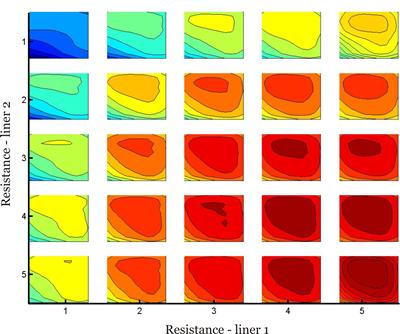
Cavity liners are used in intake and bypass ducts for noise control. These linings attenuate some of the engine noise before the sound is radiated from the nacelle. The effectiveness of cavity linings is dependent on their depth, which determines the optimum frequency range for the sound attenuation.
The potential benefit of an axially-segmented intake liner has been examined. A mode-matching technique has been utilized to predict sound transmission in lined ducts which contain different axial segments of acoustic lining.
Using advanced optimization techniques, simulations of an axially-segmented lining have been shown to increase the attenuation of fan tone noise sources. In the optimization the design variables included the resistance of two lined sections, as well as the depth of each lininig, and their axial lengths.
This work had some financial support provided by Rolls-Royce plc.
Acoustic scattering by an axially-segmented turbofan inlet duct liner at supersonic fan speeds
By A. McALPINE, R.J. ASTLEY, V.J.T. HII, N.J. BAKER, and A.J. KEMPTON.
Journal of Sound and Vibration, 294:780-806, 2006.
Response surface method optimization of uniform and axially segmented duct acoustic liners
By L. LAFRONZA, A. McALPINE, A.J. KEANE, and R.J. ASTLEY.
Journal of Aircraft, 43(4):1089-1102, 2006.
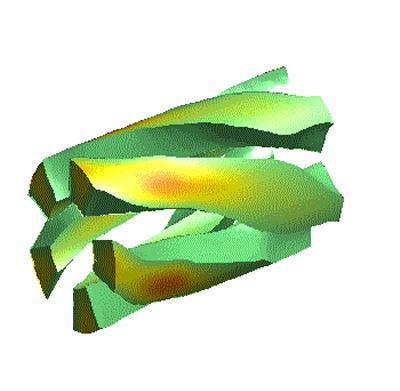
Longitudinal acoustically "hard" strips or splices can be used to fasten acoustic linings in turbofan ducts. The presence of splices has been shown using analytical (and also numerical) methods to cause azimuthal mode scattering, which may reduce the overall sound attenuation.
It has been shown that reducing the splice width reduces the scattered energy. As a result of this type of analysis, “splice-less” liners are now being designed and manufactured.
This work was funded by the European project SILENCE(R).
Acoustic scattering by a spliced turbofan inlet duct liner at supersonic fan speeds
By A. McALPINE and M.C.M. WRIGHT.
Journal of Sound and Vibration, 292:911-934, 2006.
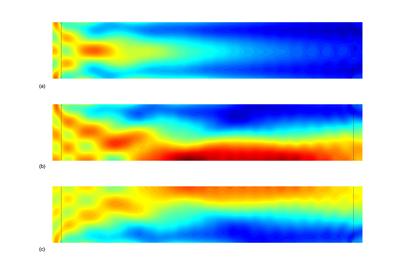
Ongoing research into sound transmission in lined ducts containing sheared mean flow aims to investigate how a boundary layer affects the sound attenuation. Of particular interest is how high-frequency sound is refracted by a shear flow. The sound can be refracted towards or away from the duct wall, thus increasing or decreasing the absorption of acoustic energy by the lining.
This work was funded by the EPSRC and Rolls-Royce plc.
Sound transmission in ducts with sheared mean flow
By C.J. BROOKS and A. McALPINE.
AIAA 2007-3545, 2007. Proceedings of the 13th AIAA/CEAS Aeroacoustics Conference,
Rome, Italy, May 21–23, 24 pages.
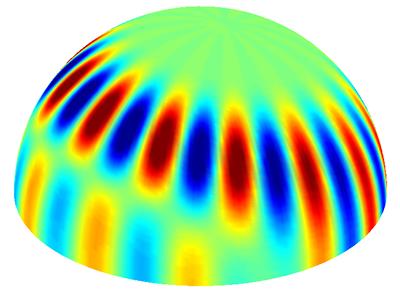
Analytical methods can be used to calculate the radiation of sound from ducts. The radiation of sound from ducts is given in terms of directivity patterns. These show the level at different polar and azimuthal angles in the far field.
Using analytical methods, typically it is assumed that the duct walls are thin. Calculating the diffraction for the specific intake lip geometry normally requires the use of numerical methods.
This work had some financial support provided by Rolls-Royce plc.
Multi-mode radiation from an unflanged, semi-infinite circular duct with uniform flow
By S. SINAYOKO, P. JOSEPH, and A. McALPINE.
Journal of the Acoustical Society of America, 127(4):2159-2168, 2010.
Sound radiation from a flanged inclined duct
By A. McALPINE, A.P. DAYMOND-KING, and A.J. KEMPTON.
Journal of the Acoustical Society of America, 132(6):3637-3646, 2012.